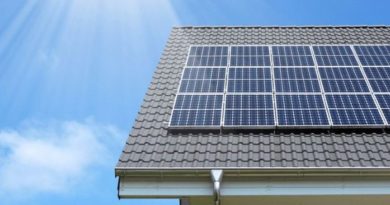Clean Energy Investments in Developing Nations Falls Post Slowdown in China
 More Sunny Than Windy
More Sunny Than Windy
A new report has revealed that the investments in wind, solar, and other clean energy projects in developing nations dropped sharply in 2018, largely due to a slowdown in China. While the number of new clean power-generating plants completed stayed flat year-to-year, the volume of power derived from coal surged to a new high, according to Climatescope, an annual survey of 104 emerging markets conducted by research firm BloombergNEF (BNEF).
The findings suggest that developing nations are moving toward cleaner power but not nearly fast enough to limit global CO2 emissions or the consequences of climate change. The majority of new power-generating capacity added in developing nations in 2018 came from wind and solar, for instance. But the majority of power to be produced from the overall fleet of power plants added in 2018 will come from fossil sources and emit CO2. This is due to wind and solar projects generating only when natural resources are available while oil, coal, and gas plants can potentially produce around the clock.
Meanwhile, the volume of actual coal-fired power generated and consumed in developing countries jumped to 6.9 thousand terawatt-hours in 2018, up from 6.4 thousand in 2017. The approximately 500 terawatt-hours in new coal consumption is roughly equivalent to all the power consumed in Texas in a normal year. Across the 104 emerging markets surveyed in Climatescope, coal accounted for 47 percent of all generation.
Furthermore, the report delineates that China, which is both the world’s largest CO2 emitter and the largest market for clean energy production and consumption, played a crucial role in the story. Investment in new wind, solar, and other non-large hydro renewables projects in the country fell to USD 86 billion in 2018 from USD 122 billion in 2017. That net decline mirrored a USD 36 billion drop in emerging markets’ clean energy investment figures, the largest ever tracked by Climatescope.
The decline was not confined to China, however. Inflows to clean energy projects in India and Brazil slipped USD 2.4 billion and USD 2.7 billion, respectively from the year prior. Across all emerging markets surveyed, 2018 investment fell to USD 133 billion, lower than not just the 2017 total but the 2015 figure as well. Overall, declining costs for solar and wind played a considerable factor in the fall in absolute dollar investment in emerging economies.
“This year’s Climatescope headline results are undeniably disappointing,” said Luiza Demôro, who manages the project for BloombergNEF. “However, apart from the very largest nations, we did see some important and positive developments, in terms of new policies, investment, and deployment.”
Excluding China, India and Brazil, clean energy investment jumped to USD 34 billion in 2018 from USD 30 billion in 2017. Most notably, Vietnam, South Africa, Mexico and Morocco led the rankings with a combined investment of USD 16 billion in 2018. Excluding China alone, new clean energy installations in emerging markets grew 21 percent to achieve a new record, with 36 GW commissioned in 2018, up from 30 GW in 2017. This is twice the clean energy capacity added in 2015 and three times the capacity installed in 2013.
“The transition from coal toward cleaner sources in developing nations is underway,” said Ethan Zindler, head of Americas at BNEF. “But like trying to turn a massive oil tanker, it takes time.”
Source: saurenergy.com




